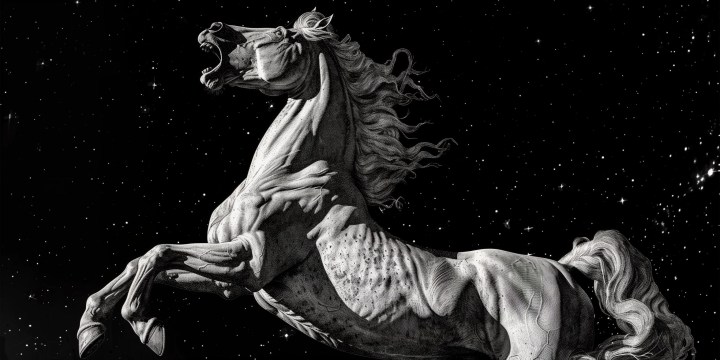POET’S CORNER
Like gum under your shoe, good poetry should stay with you for the journey

Images that make the reader feel what the writer intended and appeal to all senses create strong poetry.
Images in poetry are not limited to visual representations. They encompass all the senses, allowing us to “see” through taste, touch, sound and smell. The evocative power of images can conjure up memories as vividly as photographs. For example, the taste of a familiar dish can conjure up a specific childhood moment, or the pain of a bee sting can make you remember a long-ago excursion with friends.
Christina Rossetti’s Sonnet N°2, taken from her collection Monna Innominata, explores this sensory imagery well. The author wishes to recapture the first day, the first hour, the first moment of an encounter with someone… an encounter that has left no lasting impression. And this is ironic, given that poets strive to leave behind that lasting impact, through the active use of “word paintings”. The sonnet in question uses amnesia as its image, painting a picture of forgotten moments that should have been as striking as they are elusive.
“I let it come and go / As traceless as a thaw of bygone snow,” the sonnet repeats, hinting at a vital yet fleeting realisation, acknowledged only in retrospect. Poetry demands that readers experience a gamut of feelings — joy, sorrow, laughter, tears — both during and after the reading.
Robert Frost believed that the emotions of the poet are essential and evoke similar responses in the reader. “No tears in the writer, no tears in the reader. No surprise in the writer, no surprise in the reader,” he said.
I often say the poet is like a painter in their studio, words and expressions of different colours swirling around, sticking to walls, driven by the poet’s own passion, fuelling the poem’s impact.
Without this ardent engagement, a poem lacks life.
Read more in Daily Maverick: The sonnet — weaving an elegant thread of timeless appeal
What images from poems have left you floored, touched, wounded or elated? For lovers of poetry, such moments are countless.
The more one burrows into poetry, the more one uncovers these dramatic “pictures”, and the more one feels compelled to engage with them physically and emotionally. Whether it’s reciting the lines, or “painting” them, you will savour their taste. Such a deep reaction often results in an inclination to experience them in a fuller, more fitting manner.
This intense connection is how poets are born. Indeed, this is the genesis of all artists, whether they be chefs, football players, singers or dancers. They first experience, then they are compelled to create or recreate. People were imitating Michael Jackson long before he was gone.
One of my favourite South African poets long ago let me know that it took an effort for him to quit writing TS Eliot-sounding lines. All of this is normal. My own poems are infused with that South African poet’s lines and sounds, and I have had to catch myself sounding like him, enough to recast a line or a stanza. It is all normal. It is a learning process.
We build on what is already there.
The more we read and write, the more we know what is efficient, and the more we employ the things we deem effective, finding our own voice as poets. In other words, the more we imitate Michael Jackson, the more we develop our own dancing style, until we’re independent and free. It is a known fact that little Michael Jackson grew up imitating James Brown.
Poetry deprived of imagery — in the form of similes and metaphors, etc, is merely lacklustre prose.
“Simile”, related to “similar”, compares two things using “as” or “like”, as in: “He slept like a log.” A metaphor, however, directly labels one thing as something else, another seemingly unrelated object. For example, “Time is money”.
Remarkably, EE cummings at age three penned, “Oh, the pretty birdie, O; with his little toe, toe, toe!” — a line that naturally conjures the image of a tiny bird hopping about. In Tropic of Cancer, Henry Miller strongly describes an erection as feeling “light and heavy at the same time, like a piece of lead with wings”. These instances exemplify imagery, those forceful and striking descriptions that ignite readers’ senses and stir their imaginations. When crafted competently, they are not ignorable.
Read more in Daily Maverick: Why add the horror of an eternal afterlife to the fearful life we’re already living?
In Marianne Moore’s poem Silence, the voice says: “Self-reliant like the cat— / that takes its prey to privacy, / the mouse’s limp tail hanging like a shoelace from its mouth.”
Can you visualise it? This is the impact of an adeptly crafted simile — memorable and vivid.
Similarly, in Derek Walcott’s Four Poems, an evocative scene unfolds before our senses: “I watch the huge trees tossing at the edge of the lawn / like a heaving sea without crests, the bamboos plunge / their necks like roped horses as yellow leaves, torn / from the whipping branches, turn in an avalanche; / all this before the rain scarily pours from the burst, / sodden canvas of the sky like a hopeless sail, / gusting in sheets and hazing the hills completely / as if the whole valley were a hull outriding the gale / and the woods were not trees but waves of a running sea.” Such a vivid barrage of imagery is simply not going to let you forget it.
For my second poetry collection, Waslap, published by Onslaught Press in 2015, I wrote a poem that eventually evolved into a complete metaphor.
My family experienced a violent attack on 4 September 1981, perpetrated by rogue elements of the Lesotho Defence Force and supporters of Leabua Jonathan’s ruling party. In the poem, we are horses. The transformation toward a whole metaphor wasn’t a conscious one; rather, it occurred gradually as I wrote, revised and processed the poem. The final piece, fittingly titled The Horses, felt far more potent and expressive in metaphorical form than a straightforward recount of that traumatic night would have been.
Do you have any memorable images from poetry or prose that have stuck with you over the years? If you’re a writer, do you consciously incorporate imagery into your work? Or do you just let it happen “naturally”?
Imagery, appealing to the five senses, is a powerful tool in writing. It even gave rise to Imagism, a literary sub-movement in early 20th-century poetry known for its precise imagery and clear language. DM
Rethabile Masilo is a Mosotho poet from Lesotho who lives in Paris, France.
The horses
By Rethabile Masilo
Those people did come in bakkies, four
perhaps, out of the west. When one of the men
came over, and touched our manes with his hand,
our mother rippled.
We had been taught to never neigh.
When one fine day a neighbour beat us
for eating his best beets and lettuces,
even then we only bit our lips and let air
ruffle our hair in his face while he struck.
But these men here spoke a language
we didn’t know. Father stood on his hind legs
and bared his teeth at them. And even
at that dark hour, with the stars watching,
mother walked over to our youngest, swished
flies off his face with her tail, then spun around
to face those men again. No one neighed.
Not even when the shooting began.
Silence
By Marianne Moore
My father used to say,
“Superior people never make long visits,
have to be shown Longfellow’s grave
or the glass flowers at Harvard.
Self-reliant like the cat—
that takes its prey to privacy,
the mouse’s limp tail hanging like a shoelace from its mouth—
they sometimes enjoy solitude,
and can be robbed of speech
by speech which has delighted them.
The deepest feeling always shows itself in silence;
not in silence, but restraint.”
Nor was he insincere in saying, “Make my house your inn.”
Inns are not residences.
This story first appeared in our weekly Daily Maverick 168 newspaper, which is available countrywide for R35.




















I see Christina Rosetti, I upvote.
𝘞𝘩𝘦𝘯 𝘐 𝘈𝘮 𝘋𝘦𝘢𝘥, 𝘔𝘺 𝘋𝘦𝘢𝘳𝘦𝘴𝘵 is one of my all-time favourites.
…
I dare say, your words in 𝘛𝘩𝘦 𝘏𝘰𝘳𝘴𝘦𝘴 paint a much better picture than the illustrative image accompanying this article. Amazing.
I see Christina Rosetti, I upvote.
𝘞𝘩𝘦𝘯 𝘐 𝘈𝘮 𝘋𝘦𝘢𝘥, 𝘔𝘺 𝘋𝘦𝘢𝘳𝘦𝘴𝘵 is one of my all-time favourites.
…
I dare say, your words in 𝘛𝘩𝘦 𝘏𝘰𝘳𝘴𝘦𝘴 paint a much better picture than the illustrative image accompanying this article. Amazing.